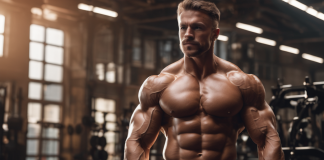Last Updated on December 17, 2023
When you see professional athletes on the field or court, they move fluidly and almost effortlessly from one position to another. They are also capable of bending at angles that most people would struggle to reach. You wouldn’t think it by looking at them, but these athletes have extremely developed mobility as well as flexibility. We all have heard that we need to work on our flexibility in order to improve our performance in sports and other physical activities. But what is the difference between mobility and flexibility, and which do you need to focus more on? If you’re reading this article, it’s likely that you spend a lot of time working out and trying to get fitter. The truth is that most people don’t know exactly how their bodies react when pushed physically beyond their natural limits.
What is Flexibility?
Flexibility is the ability of a muscle or a joint to move beyond its normal range of motion. If a joint doesn’t have flexibility, it means that the muscles surrounding it can’t move through its full range of motion. For example, if your hamstring muscles are too inflexible, you won’t be able to fully straighten your leg. This lack of flexibility is usually caused by an imbalance in the strength of your muscles. For example, if your hamstrings are extremely tight, your quads will need to compensate for their weakness and over-tighten. When this happens, your knees are forced to bend more than they should, and your ankles lose their natural flexibility.
What is Mobility?
Mobility is the ability of a joint or group of joints to achieve their full range of motion. So why am I not talking about flexibility? Well, mobility also refers to your body’s ability to function and move in the most efficient way possible. When it comes to your fitness, mobility is a lot more important than flexibility. Why? Because it governs the way you perform in sports, the way you move, and how well your nervous system sends messages to your muscles. Similarly, it determines how well your muscles react to stress and how quickly they recover. If your muscles are stiff and inflexible, they’re likely to be in a constant state of tension which can lead to fatigue and injury.
The Importance of Having Both
You might think that as a sports enthusiast, you should focus primarily on increasing flexibility. After all, that’s what the majority of articles about improving fitness focus on. The thing is – having excellent flexibility and being super bendy isn’t always a good thing. This is why having both mobility and flexibility is critical for optimal performance. Having both will help you achieve proper form during various exercises. It will also help you perform your daily tasks with less strain and back pain as you will be able to move and lift things with ease.
How to Develop Flexibility and Mobility Together
The good thing about improving your flexibility and mobility is that you don’t need to make drastic changes to your workout routine. If you’re already working out 3-5 times a week, you can add these activities. If you’re doing yoga, pilates, or other forms of stretching, you’re already working on improving mobility and flexibility. But if you want to add more exercises, here are a few that can help you boost your flexibility and mobility: Squats, lunges, push-ups, dips, and planks. When you add these exercises to your usual workouts, you’ll automatically increase your flexibility and mobility. What’s more, you’ll also improve your core strength and the strength of your joints – two things that are essential for staying fit and healthy.
4 Exercises to help increase flexibility and mobility
Hindu Squat – The Hindu squat is a traditional yoga pose that can help improve your flexibility and mobility. Begin by standing with your feet slightly wider than shoulder-width apart and lifting your toes off the floor. You may need to place a yoga mat or towel underneath your feet if you’re performing this exercise on a hard surface. Next, lower your knees and sit back into a squatting position. Make sure that your knees are aligned with your toes and that your heels are touching the floor. If they don’t, try to keep them as close to the ground as possible. Balancing on your toes, lower your torso until your thighs are parallel to the ground. Then, push back up to the starting position.
Wall Squat – The wall squat is a simple exercise that will help improve your flexibility and mobility. Stand in front of a wall with your feet a few feet away from it. Then, place your hands against the wall and lower yourself into a squatting position. Make sure that your knees are aligned with your toes. If they aren’t, you can adjust their position by moving your feet further away from the wall. When you’re in a squatting position, hold this position for about 30 seconds. Then, push yourself back up to the starting position.
Push-ups – Push-ups are one of the most effective exercises for improving flexibility and mobility. They are also a great way to build strength and tone your upper body. Begin by lying on your stomach with your palms facing down and your elbows bent at a 90-degree angle. Make sure that your feet are touching the ground to prevent your lower back from taking all of the pressure. Then, push your body up so that your arms are straight. Hold the position for a few seconds before lowering yourself back down.
Planks – Planks are an excellent way to improve flexibility and mobility in your core region. They will also help you strengthen your shoulders, triceps, and lower back. Begin by lying down on your stomach with your palms facing the ground and resting on the floor. Lift your legs off the floor and keep your core region tight.
There’s a lot more to fitness than just being able to lift heavy weights or run long distances. A lot of people forget that our bodies are complex, and we need to take care of them by improving our flexibility and mobility. If you want to be able to perform your best and avoid injuries, you need to focus on your entire wellness – not just your ability to hit the gym or run a few miles.







